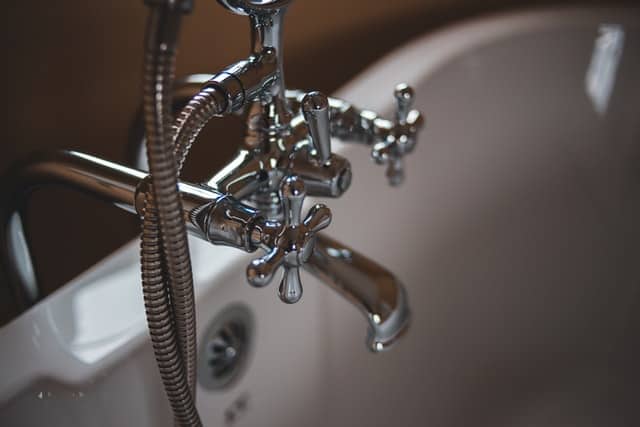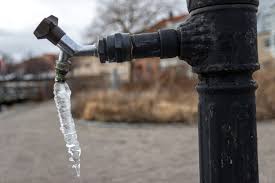Guidance on Winterize Your Plumbing: 5 Hacks to Prevent Bursting Pipes in Frigid Temperatures
Guidance on Winterize Your Plumbing: 5 Hacks to Prevent Bursting Pipes in Frigid Temperatures
Blog Article
The article author is making a number of good points regarding Winterizing Your Pipes in general in this great article following next.

All homeowners that live in pleasant climates have to do their finest to winterize their pipelines. Failure to do so can spell catastrophe like icy, split, or ruptured pipelines.
Switch on the Faucets
When the temperature drops and it appears as if the icy temperature level will certainly last, it will assist to turn on your water both indoors and outdoors. This will certainly maintain the water moving through your plumbing systems. You'll finish up squandering gallons of water this way.
Open Cabinet Doors Hiding Plumbing
When it's chilly outside, it would be useful to open closet doors that are concealing your pipelines. Doing this tiny technique can keep your pipes warm as well as restrict the possibly dangerous end results of freezing temperature levels.
Require Time to Wrap Exposed Pipeline
One clever and very easy hack to warm up icy pipes is to wrap them with warm towels. You can also make use of pre-soaked towels in warm water, simply don't fail to remember to use protective gloves to secure your hands from the warmth.
Attempt a Hair Dryer or Warm Weapon
When your pipelines are virtually freezing, your trusty hair clothes dryer or warmth gun is a godsend. If the hot towels do not help displace any type of working out ice in your pipes, bowling hot air straight into them may assist. Do not make use of various other objects that produce direct fires like a strike lantern. This can cause a bigger catastrophe that you can not regulate. You might end up damaging your pipes while trying to melt the ice. And over time, you might even end up shedding your house. So beware!
When Pipelines are Frozen, close Off Water
Shut off the major water shutoff promptly if you see that your pipes are completely icy or practically nearing that stage. You will usually discover this in your basement or utility room near the heating system or the front wall surface closest to the street. Turn it off today to prevent additional damages.
Do not forget to shut external water resources, as well, such as your connection for the garden house. Doing this will stop added water from filling up your plumbing system. With even more water, more ice will stack up, which will ultimately lead to rupture pipelines. If you are unsure regarding the state of your pipes this winter season, it is best to call a specialist plumber for an inspection. Taking this aggressive technique can save you countless bucks out of commission.
All house owners that live in warm climates have to do their best to winterize their pipelines. Failing to do so can spell calamity like icy, split, or ruptured pipes. If the warm towels do not aid displace any type of resolving ice in your pipes, bowling warm air straight right into them may aid. Turn off the main water shutoff right away if you notice that your pipes are entirely frozen or nearly nearing that stage. With more water, more ice will load up, which will at some point lead to rupture pipes.
PREVENT YOUR PIPES FROM FREEZING THIS WINTER
A Leading Cause of Property Damage
When the weather is taking a deep nose dive into the cold dreary days, the risk of your pipes freezing and potentially bursting skyrockets. Unfortunately, during these cold dreary months, burst pipes are the most common denominator for property damage. The pipes that are most at the risk are those that are in areas where it is most cold in your home. For instance, pipes located in interior places such as basements, attics, and your garage. Unfortunately, that doesn’t mean that the pipes running through your cabinets or exterior walls can’t freeze. Good news, however, is that you can do things to help prevent pipes from freezing.
How to Prevent Pipes From Freezing
Once the temperature starts to drop during the winter, you should be taking the proper measures needed to ensure that your pipes stay warm and that there is circulation of water through them. Some steps that experts may recommend could go against your better judgement when it comes to saving water and heat. However, it would go without saying that when expenses are compared, damaged pipes could put a bigger dent in your wallet than a water bill.
What Can I Do?
Keep your garage door closed. This is very important, especially if you have water supply lines running through your garage. Open your kitchen and bathroom cabinets to allow warm air to circulate through them. Allow air circulation throughout your home. Keeping the interior doors open will once again allow the warm air to circulate inside your home. Ensure your thermostat is running the same temperature throughout the night and day. If you plan to be away from home during the cold months, set your temperature no lower than 55° F. This should provide enough heat to keep the pipes warm and prevent any remaining water inside the pipes from freezing. For more of a long-term solution, add insulation to attics, basement, and other crawl spaces around your home. By allowing your faucet to drip, it will alleviate pressure in the system. This is important because the pressure that is created between the blockage and the faucet can potentially cause the pipes to burst. Allowing the faucet to drip will prevent the pressure from building up, therefore keeping the pipes from bursting. Seal any cracks, openings, and crawl spaces around your home to prevent cold air from coming inside. This keeps your pipes-not to mention your home-warmer and less susceptible to issues caused by freezing temperatures. For the pipes in your home that are easily accessible, applying electrical tape to them might prevent them from freezing over. This is a quick fix, as you can apply the tape directly to the pipe. There are two options for heating tapes. One turns on and off by itself when it senses heat is needed. The other type of heating tape needs to be applied when heat is needed and removed when not necessary. If you have exposed pipes in your home, you can check this website to take a look at a few options that would be available at a shop near you.

As a reader about How to stop pipes from freezing during the winter, I figured sharing that excerpt was worth the trouble. Sharing is caring. Who knows, you may just be helping someone out. We love reading our article about Prevent Freezing and Bursting Pipes.
Click For More Info Report this page